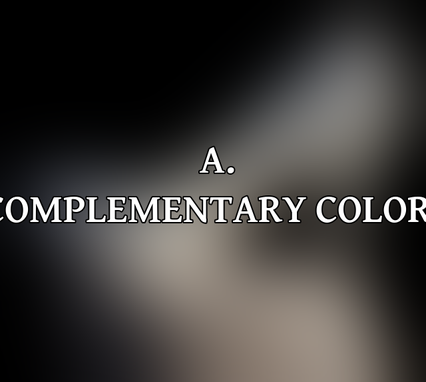the use of colors plays a significant role in influencing emotions and behaviors. Colors have the power to evoke specific feelings and create diverse responses in individuals. Understanding the psychological impact of colors is crucial for designers, marketers, and anyone involved in visual communication. This impact can be shaped by cultural norms, personal experiences, and the context in which the colors are used.
| Feature | Description | Link | |||||||||||||||||||||||||||||||||||||||||||||||||||||||||||||||||||||||||||||||||||||||||||||||||
|---|---|---|---|---|---|---|---|---|---|---|---|---|---|---|---|---|---|---|---|---|---|---|---|---|---|---|---|---|---|---|---|---|---|---|---|---|---|---|---|---|---|---|---|---|---|---|---|---|---|---|---|---|---|---|---|---|---|---|---|---|---|---|---|---|---|---|---|---|---|---|---|---|---|---|---|---|---|---|---|---|---|---|---|---|---|---|---|---|---|---|---|---|---|---|---|---|---|---|---|
| Image Library | Access to over 190 million royalty-free stock photos, vector images, videos, and music tracks | Depositphotos Image Library | |||||||||||||||||||||||||||||||||||||||||||||||||||||||||||||||||||||||||||||||||||||||||||||||||
| Collections by Theme | Curated collections of images organized by specific themes, making it easy to find the perfect visuals for your project | Depositphotos Collections | |||||||||||||||||||||||||||||||||||||||||||||||||||||||||||||||||||||||||||||||||||||||||||||||||
| Advanced Search Filters | Refine your search using advanced filters based on orientation, size, color, and more to quickly find the images you need | Depositphotos Advanced Search | |||||||||||||||||||||||||||||||||||||||||||||||||||||||||||||||||||||||||||||||||||||||||||||||||
| Inspiration and Ideas | Discover new trends, explore curated content, and get inspiration from a community of creatives | Depositphotos Blog | |||||||||||||||||||||||||||||||||||||||||||||||||||||||||||||||||||||||||||||||||||||||||||||||||
| Editorial Content | Access to a vast database of editorial images for news, media, and publishing purposes | Depositphotos Editorial | |||||||||||||||||||||||||||||||||||||||||||||||||||||||||||||||||||||||||||||||||||||||||||||||||
| Flexible Licensing Options | Choose from a variety of flexible licensing options to suit your specific needs and budget | Depositphotos Licensing | |||||||||||||||||||||||||||||||||||||||||||||||||||||||||||||||||||||||||||||||||||||||||||||||||
| Royalty-Free Usage | Use licensed images multiple times without worrying about additional fees | Depositphotos Royalty-Free | |||||||||||||||||||||||||||||||||||||||||||||||||||||||||||||||||||||||||||||||||||||||||||||||||
| Expert Support | Benefit from 24/7 customer support to assist you with any questions or issues | Depositphotos Support | |||||||||||||||||||||||||||||||||||||||||||||||||||||||||||||||||||||||||||||||||||||||||||||||||
| Visit Depositphotos | |||||||||||||||||||||||||||||||||||||||||||||||||||||||||||||||||||||||||||||||||||||||||||||||||||
The power of colors in influencing emotions and behaviors
Colors have the ability to evoke emotions, trigger memories, and influence decision-making processes. The field of color psychology delves into how different colors can impact human emotions and behaviors. For example, warm colors like red, orange, and yellow are known to evoke feelings of energy, warmth, and excitement, while cool colors like blue, green, and purple create a sense of calmness and tranquility.
How cultural and personal experiences shape color perceptions
Cultural background and personal experiences play a crucial role in how individuals perceive and interpret colors. Certain colors may have different meanings and associations in various cultures. For instance, white symbolizes purity and mourning in Western cultures, while it represents celebration in Eastern cultures. Similarly, the color red may signify love and passion in Western cultures, but it is associated with luck and prosperity in Chinese culture.
Color Psychology in Design
Warm Colors (Red, Orange, Yellow)
Warm colors such as red, orange, and yellow are known for evoking feelings of warmth, energy, and excitement. In design, these colors are often used to create a sense of vitality and enthusiasm. For example, in sports posters or branding for creative agencies, vibrant warm colors can convey energy and dynamism.
Examples:
- Energizing sports posters
- Creative agency branding
Images from Depositphotos:
High-energy images with vibrant warm colors
Cool Colors (Blue, Green, Purple)
On the other hand, cool colors like blue, green, and purple evoke a sense of tranquility, calmness, and relaxation. These colors are commonly used in designs aimed at promoting serenity and peace. For instance, in spa brochures or educational posters, soothing cool colors can help create a calming and inviting ambiance.
Examples:
- Tranquil spa brochures
- Calming educational posters
Images from Depositphotos:
Serene images with soothing cool colors
Emotional Responses to Colors
Red: Passion, excitement, danger
Orange: Enthusiasm, creativity, positivity
Yellow: Happiness, optimism, warmth
Green: Growth, renewal, tranquility
Blue: Trustworthiness, stability, calmness
Purple: Sophistication, luxury, mystery
Cultural Impact on Color Meaning
Colors hold diverse symbolic meanings across different cultures, influencing how they are perceived and interpreted. Understanding these cultural nuances is essential when creating designs for a global audience. For example, while white may symbolize purity and mourning in Western cultures, it signifies celebration in Eastern cultures. Similarly, the color red may represent love and passion in Western cultures but symbolize luck and prosperity in Chinese culture.
Color symbolism varies across different cultures
Color associations can vary widely across different cultures, emphasizing the importance of cultural sensitivity in design and marketing practices. Designers should be mindful of the cultural connotations of colors to ensure their message resonates effectively with diverse audiences.
Examples:
- White: Purity and mourning (Western cultures) vs. celebration (Eastern cultures)
- Red: Love and passion (Western cultures) vs. luck and prosperity (Chinese culture)
Color Combinations and Their Effects
The combination of colors in a design can significantly impact how the message is perceived. Different color combinations evoke varied emotional responses and visual effects. Understanding these color relationships is pivotal in creating visually appealing and harmonious designs.
A. Complementary colors

Complementary colors, such as red and green, create a striking contrast that grabs the viewer’s attention. This contrast can be used to highlight key elements in a design and create visual interest.
B. Analogous colors
Analogous colors, like blue, green, and purple, lie next to each other on the color wheel and create a harmonious effect. These colors work well together to create a cohesive and balanced design palette.
C. Triadic colors
Triadic colors, such as red, yellow, and blue, form an equilateral triangle on the color wheel, offering a vibrant and dynamic color scheme. This color combination enhances visual interest and can be used to create a lively and engaging design.
Color Theory in Graphic Design
Understanding color theory is essential for graphic designers to create compelling and effective designs. The color wheel serves as a fundamental tool for understanding color relationships and creating harmonious color schemes. Additionally, knowledge of hue, saturation, and brightness allows designers to manipulate colors effectively to achieve the desired visual impact.
A. Color wheel

The color wheel is a visual representation of the relationships between colors. It is categorized into primary colors (red, blue, yellow), secondary colors (orange, green, purple), and tertiary colors. Designers can use the color wheel to explore different color harmonies and combinations.
B. Hue, saturation, and brightness
Hue refers to the actual color, saturation determines the intensity of the color, and brightness relates to how light or dark a color appears. By adjusting these components, designers can create diverse color palettes that convey specific moods and emotions.
C. Color palettes and schemes for effective design
Designers often use color palettes and schemes to organize and plan the use of colors in their designs. Common color schemes include monochromatic, analogous, complementary, and triadic, each offering a distinct visual appeal. By employing these color schemes strategically, designers can create visually engaging and impactful designs.
Ethical Considerations
When incorporating colors into design, it is essential to consider ethical considerations to ensure inclusivity and accessibility for all individuals.
A. Colorblindness and accessibility

Designers should be mindful of colorblindness and ensure that color choices do not hinder the comprehension of information for individuals with color vision deficiencies. Using color combinations that provide sufficient contrast and incorporating alternative design elements can enhance accessibility for all users.
B. Color-coding and cultural sensitivities
Color-coding can be a powerful tool in design but should be used thoughtfully to avoid misinterpretation or exclusion based on cultural sensitivities. Understanding the cultural implications of color choices can help designers create inclusive and culturally sensitive designs that resonate with diverse audiences.
The significance of colors in design and marketing cannot be understated. Colors have the ability to evoke emotions, convey messages, and shape perceptions. By understanding color psychology and the cultural impact of colors, designers can create impactful and resonant designs that effectively communicate with their target audience. Depositphotos offers a vast and diverse library of high-quality images featuring a rich variety of colors, providing designers with ample resources to enhance their creative projects.
To explore Depositphotos’ extensive collection of color-rich images, visit their website. Embrace the power of color psychology in your designs and unlock new possibilities in visual communication.
Frequently Asked Questions
What is the psychological impact of colors in design?
Colors have the power to evoke emotions and influence perceptions. For example, red can create a sense of urgency or excitement, while blue is often associated with calmness and trust.
How can colors affect consumer behavior?
Colors can play a significant role in consumer behavior. For instance, using warm colors like red or orange can prompt impulse purchases, while cooler tones like blue or green can convey a sense of trust and reliability.
Are there cultural differences in how colors are perceived?
Yes, colors can have different meanings and interpretations across cultures. For example, white is commonly associated with purity or weddings in Western societies but symbolizes mourning in some Eastern cultures.
How can designers leverage the psychological impact of colors?
Designers can strategically use colors to influence how people perceive their products or brands. Understanding color psychology can help create a cohesive and impactful design that resonates with the target audience.
Can color choices in design affect user engagement?
Absolutely, color choices can impact user engagement and overall user experience. Using contrasting colors to draw attention or creating a visually appealing color scheme can enhance engagement and make designs more memorable.

